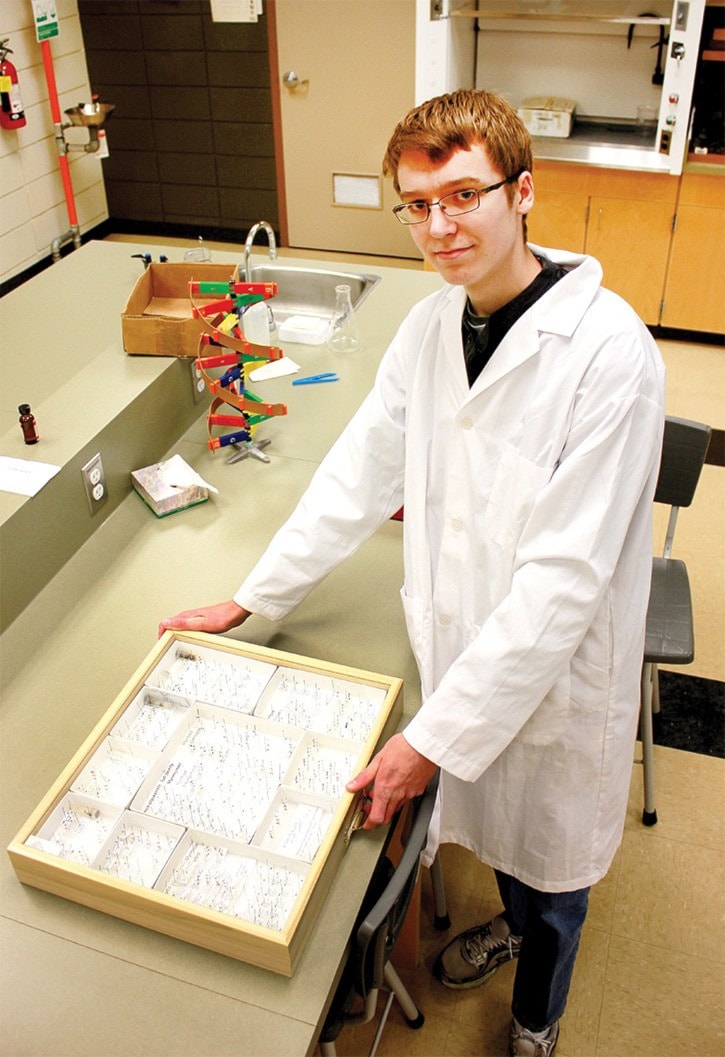This summer a few dozen ants will journey from Williams Lake to Harvard University.
For the last couple of years Thompson Rivers University Biology Assistant Professor Rob Higgins has been researching the European Fire Ant.
In July he will take two dozen of his collection of ants to compare and add them to an existing collection at Harvard’s Museum of Comparative Zoology.
“Harvard has the largest collection of ants in the world in their insect collection so it’s an opportunity to look at how our species of ants fits in with the species that are found in other areas of North America and try to determine in fact if some of our species have been described as other species,” Higgins told the Tribune.
The European Fire Ant has been introduced into the Vancouver, Victoria area, coming in primarily through landscaping plants.
“It belongs to a particular genus of ants known as Myrmica ants, which are very difficult to identify,” he explained.
Difficulties arise because the characteristics between the different species are quite variable, and while a few people have worked on them a bit in the past, it has become apparent there’s a need to revise the entire genus and look at them fresh.
“This has been on my mind for three or four years so I’ve decided to devote the summer to this project,” Higgins said.
In advance of his week-long visit to Harvard, he will also work with ant collections at the University of Quebec and the University of Maine.
Higgins has a collection of Myrmica ants he has gathered from many areas in B.C. including around Williams Lake, Becher’s Prairie, the Kootenays, the Okanagan, and the Bulkley Valley.
By visiting other universities to examine their ant collections, he hopes to help decipher which ants are native and which ones have been introduced.
“I would like to develop a key that other researchers can use to really start to tell all these ants apart,” he said.
Undergraduate science student Mitchell Johnson who recently completed his first year of studies and is from Williams Lake is assisting Higgins with the project.
Johnson is preparing specimens of the European fire ant and related species in B.C. that will be added to the Harvard collection.
The work — pinning and labelling ant specimens for the collection — is not normally offered to an undergraduate student, Higgins said.
When asked about the overall role of ants, Higgins said they are very important ecologically and in most ecosystems, the biomass of ants exceeds that of other animals.
“If we were to compare moose in the Cariboo Chilcotin to the weight of ants in the same habitat, a typical medium good habitat for moose would have about one kilogram equivalent of moose per hectare of land.
“In that same area you would expect to have 40 kilograms of ants. So you’re dealing with a weight 40 times greater than you would expect to find for moose.”
Ants love heat and when forest cover is removed it creates the perfect habitat for ants.
It becomes even more ideal when things like paving stones are added, which heat up during the day, and hold the heat at night, which is ideal for ant growth and development.
“Ants are important predators of other pest insects, for example, they attack spruce budworm. A healthy ant population is good for managing spruce budworm populations as well as Douglas-Fir Tussock Moth and Spruce Weevil.”
They are also an important food source locally for wildlife such as Flicker Woodpeckers, Black Bears and Grizzlies.
“I was involved with a study up in the Prince George area several years ago and ants, after vegetation, were what bears spent more time looking for than anything else,” Higgins said.
His passion for ants is about 15 years old, he added. Most of his efforts have been expended in B.C., although he did some collecting in Borneo in 2010.
